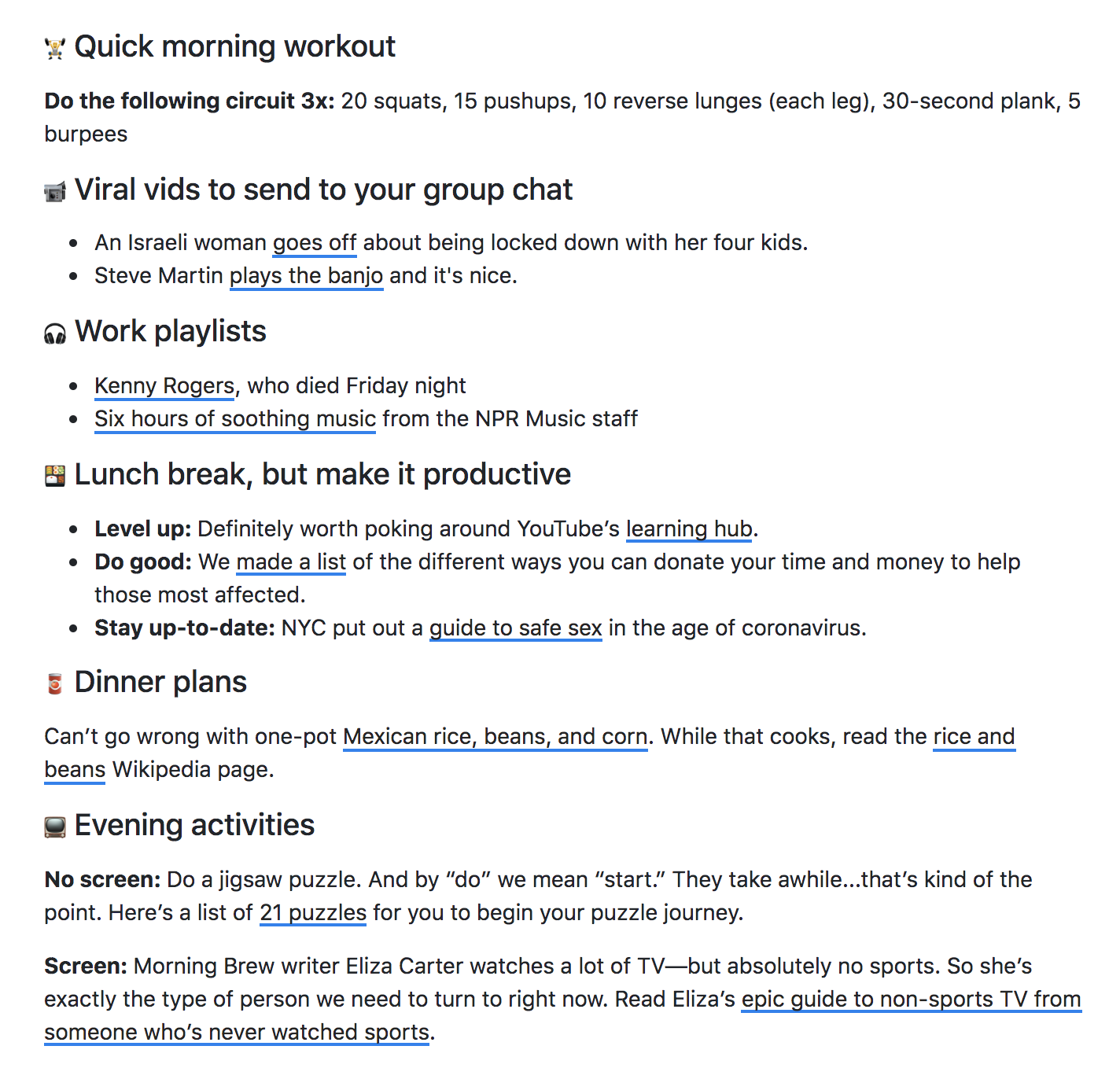Coronavirus is undoubtedly affecting your audience in some way or another. As we all learn to live in this new normal, everyone’s needs are shifting.
With most people staying inside their homes, they’re still seeking out content on the web, but what people are looking for isn’t exactly the same as it was before. This presents you with new opportunities – if you know how to find them.
Let’s look at how you can identify and cater to the new content needs of your audience.
Step 1: Find new trends
Every industry is impacted differently by coronavirus. Unfortunately, many are having a tough time with decreased demand, mandated closures and adjustments to the way everyone is staying in contact with one another.
You likely already have a good idea about how your industry is impacted by the pandemic, but you can use tools to home in on the exact terms people are searching for.
How to use Google Trends to find emerging themes
Let’s start with Google Trends. From the start, you can see what the latest trending searches are – and in this case, they are all related in some way to coronavirus. This is a good spot to find news or themes to cover, but you can seek out opportunities specific to your industry by looking at specific terms.
Here’s the trendline for “how to work from home effectively”:

“how to work from home effectively”
You can do this for B2B or B2C industries. For example, the fitness industry is hard hit by COVID-19.

“yoga videos online”
At the same time, more professionals are working from their homes and need to use technology to communicate with the people they may have previously been able to just speak face-to-face with.

“video conferencing software”
How to use social media to find new trends
One of the best qualities of social media is how quickly it reflects the trends that real people care about. It’s a great place to find out your audience’s concerns and challenges relating to COVID-19.
Listen to what your customers are saying during this time. They might be voicing concerns or asking questions. They might be sharing what’s helping them get through the new challenges that staying at home and practicing social distancing create. Respond to them. Engage them in conversation, and show appreciation for them.
Then, you can take those themes and create content around them. For some brands, that might be FAQs to help them get quick but important answers. For others, that might mean giving advice about how to keep school-aged kids in a regular routine – or how to keep children entertained while working from home.
Whatever those emerging themes are, tackle them. Your audience will appreciate all the help they can get.
How to use in-house knowledge to find topics
While you’ll do well to go out and find these emerging themes to cover, chances are, new topic ideas are already coming to you.
Pay attention to the questions people are asking your company and representatives. Create a running list of commonly asked questions, and do your best to answer them fully with online resources. This will help you understand which topics are most important to your audience right now.
Step 2: Determine how people want to consume content
Once you’ve narrowed down the topics your audience needs during this time, you have to decide how to approach them. This is a standard step in our keyword research process, and it should be an important part of this process as well.
You might have a feel for the types of content your audience responds best to already. Use this knowledge to your advantage.
Checking out the existing search engine results page can also give you some clues about what you should create for each term.
Some keywords will have obvious content types, like “yoga videos online” – that’s a no-brainer. A term like “how to work from home effectively” can take many content forms, though. A quick look at the SERP shows that the featured snippet is a list article.

Other top results hint in that direction, too; people searching this query are looking for actionable advice. They’re looking for tools to use and tricks to try. Your content should take this direction as well.
Step 3: Share with your audience
Once you’ve created your content, get it to your audience. What’s great about digital marketing is that all of your channels still work; everyone can visit your blog, check their email and use social media from self-isolation.
You already know your best channels for connecting with them, so lean on those. If your audience is super engaged on social media, share your content there, then take it one step further: Encourage them to share and comment on it.
Email is a great way to deliver helpful content directly to each person. Capitalizing on this platform to stay in contact with your audience.
The Morning Brew, a daily newsletter, created a special “Daily Planner” series as part of its email that is meant to give readers plenty of ideas on how to spend their days indoors.

Addressing your readers’ fears and concerns will help you relate to your audience. Giving them helpful information on top of that will help you earn their trust.
Marketing during such uncertain times – when people’s priorities are shifting and worries are very different than they were just a short time ago – is not easy. What’s important right now is making sure your audience knows it can turn to you for whatever it is that you do best.





